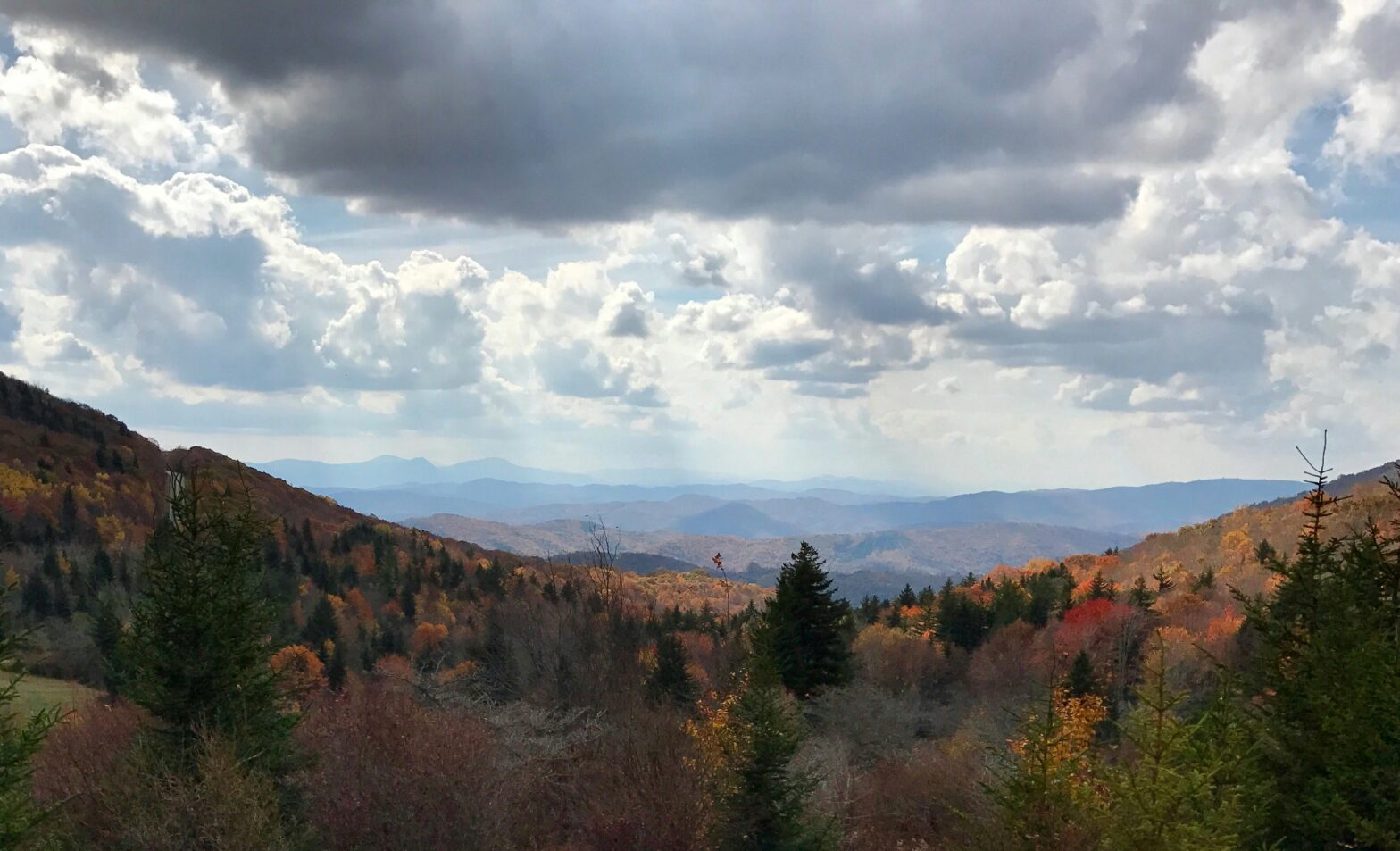One of the greatest natural treasures in the United States is the Appalachian Trail, or as outdoor enthusiasts call it, “the A.T.” Located in the Eastern region of the U.S., it is also known as the “longest hiking-only footpath in the world.” The Appalachian Trail extends nearly 2,200 miles between Georgia and Maine, passing through several states.
More than three million people hike some parts of the A.T. each year. Hiking the entire trail is impossible in a week and even a month. On average, it takes hikers anywhere between five and seven months to complete. The Appalachian Trail will take considerable time to plan correctly. A significant part of planning is getting the timing just right to avoid the large crowds.
While the trail is mostly forest and wild lands, charming towns, roads, and farms are part of the journey, which is worth a picture and a break from your hike. Get your hiking essentials ready. Here is everything you need to know about hiking the Appalachian Trail.
Quick Facts
The Appalachian Trail passes through six national parks and eight national forests. You can encounter several waterfalls on the route, including Gulf Hagas in Maine, Long Creek Falls in Georgia, Lewis Falls in Shenandoah National Park, and Money Book Falls in the Berkshires. One of the most beautiful sections of the Appalachian Trail is Carvers Gap to Grassy Ridge Bald over the rolling Roan Highlands. During the spring, beautiful wildflowers grow among the hills.
According to the Appalachian Trail Conservancy, the A.T. travels through 14 states along the crests and valleys of the Appalachian Mountain Range, from its southern terminus at Springer Mountain, Georgia, to the northern terminus at Katahdin, Maine. It’s important to note that the distance changes slightly each year due to footpath relocations and precise measuring techniques. In all, it takes about 5 million steps to hike the entire trail. For thru-hikers, a term used for people who hike the whole trail in a continuous journey, it takes six months. The total elevation gains from hiking the entire A.T. is equivalent to climbing Mt. Everest 16 times.
As a general rule of caution, the Appalachian Trail is not considered beginner-friendly. It’s a challenging hike thanks to the significant elevation changes, rocky terrain, and long distances. There are ways beginners can hike it. Virginia is home to the most miles of the trail (about 550), while West Virginia is home to the least (about 4). Maryland and West Virginia are the easiest states to hike. New Hampshire and Maine are the hardest. Beginners should take the “section-hikers” approach, which involves hiking shorter sections with less elevation gain. For context, only 1-in-4 thru-hikers successfully complete the journey.
Best Time To Hike The Appalachian Trail
While the trail is open year-round, late spring and early fall are incredible seasons to hike the Appalachian Trail. In the spring, hikers come in droves to see the wildflowers from the hills. Remember that spring doesn’t reach the high mountaintops until late April or May. Avoid “mud season” in Vermont, New Hampshire, and Maine during April and May. Of course, fall is a magical time to hike for leaf peeping. Hiking in the winter will require taking extra precautions due to cold temperatures and limited daylight.
Thru-hikers start their journey in Georgia around March or April. Most hikers suggest starting the hike at sunrise because it’s cooler. People can optimize the daylight and set up campgrounds. Hiking at sunrise is also a strategy to avoid the crowds.
- Temperature Range: During the summer, average temperatures are around 60–80°F, but the lower elevations can be hot and humid. In the winter, average temperatures range between the teens to the 60s. Average temperatures in the spring are between 50–65°F, and in the autumn, the average temperatures are between 54-76°F.
- Trail Closures/Permits: Park rangers discourage hiking in the southern A.T. as the region continues to recover from Hurricane Helene. The National Parks Service website has updates and alerts. Most areas of the Appalachian Trail do not require fees or permits. Permits are needed along three places along the trail: Great Smoky Mountains National Park, Shenandoah National Park, and Baxter State Park,
How To Prepare For Hiking The Appalachian Trail
Your clothing should reflect various weather conditions you could experience while on your journey. You need more layers for colder months, and your clothing should be designed with fabrics that will wick moisture from your skin, dry quickly, and keep you insulated. Think wool and not cotton.
A backpack with water, snacks, and trail food is a must. A reasonable amount of food to carry is about 1.5 to 2.5 lbs., which equates to about 2,500 to 4,500 calories per person per day.
To navigate the trail safely, the National Park Service has an interactive map that’s a valuable tool to keep handy. There’s also an Appalachian Trail Store with books and maps for hikers who want a physical copy.
- Packing Checklist: backpack, first-aid kit, hiking boots, insect repellant, quick-drying hiking pants, quick-drying sun shirt, sunscreen, trekking pole, water, water filter, and a whistle
- Safety Tip: Be sure to bring bear spray on the trail because it’s not uncommon for hikers to encounter a black bear. It’s essential to alert bears of your presence and give the bear space if you encounter one. If the bear doesn’t run away, avoid eye contact and back away slowly. Don’t run or play dead.
What To Expect Along The Trail
The A.T. passes through six national park service units, including the Great Smoky Mountains National Park, Blue Ridge Parkway, Shenandoah National Park, Harpers Ferry National Historical Park, Chesapeake & Ohio Canal National Historical Park, and Delaware Water Gap National Recreation Area. The trail also passes through eight national forests: Chattahoochee National Forest, Cherokee National Forest, Nantahala National Forest, Pisgah National Forest, Jefferson National Forest, George Washington National Forest, Green Mountain National Forest, and White Mountain National Forest.
Throughout your hiking adventure, pay attention to the impressive diversity of plants and animals along the trails. You may see black bears, moose, porcupines, snakes, woodpeckers, and salamanders. Plants you may encounter include jack-in-the-pulpit, skunk cabbage, and flame azalea.
- Trail Etiquette: Leave No Trace, a 1990s program founded by conservationists and outdoor industry representatives, is a national educational program that informs visitors about reducing the damage outdoors to preserve plants and wildlife. Familiarize yourself with the Leave No Trace Principles.
- Photography Tip: One of the most stunning pictures you can capture on your hike is McAfee Knob in Roanoke, Virginia. The knob features a 270-degree panoramic view of the Catawba Valley and North Mountain to the west, Tinker Cliffs to the north, and the Roanoke Valley to the east.
Know Before You Go: Important Trail Information
As previously mentioned, most areas of the Appalachian Trail do not require fees or permits. However, permits are necessary for three places along the trail: Great Smoky Mountains National Park, Shenandoah National Park, and Baxter State Park.
When it comes to accessibility, according to the Appalachian Trail Conservancy, new structures along the trail have been built to accessible standards. However, the layout of overnight sites is often not accessible. The trails from camping areas to water can be narrow, cooking areas may not feature accessible seating, and tent areas may not be designed to accessible standards.
Parking areas along the Appalachian Trail vary. Many trailheads are dirt and gravel, and others may be unmarked. You will also find that the information you find at trailheads varies along the hike, as some trailhead kiosks are filled with information about the local area while others are not. As a general rule of thumb, don’t expect restrooms. They are rare except for some state park trailheads. Another good rule is that if the trailhead is close to cities with a large population, expect the centers and facilities to fill up early on the weekends. Get to your starting place early and always have alternate locations in mind.
For water, the A.T. contains water sources such as springs, streams, ponds, rivers, and lakes. In extreme cases, water sources can dry up. Another issue that could arise is purity. It’s important to travel with lightweight tools to purify drinking water.
- Camping Information: Backcountry camping is available at 125 designated campsites along the trail. According to the Appalachian Trail Conservancy, camping is also allowed near most of the 260 shelters along the Trail. Shelters are available on a first-come, first-served basis. This interactive map provides insight into camping sites.
- Cell Service: Cell phone reception along the A.T. is unpredictable and varies between service providers. Research your carrier’s coverage maps. The best reception is on ridgelines or peaks. Service in gaps, hollows, and narrow valleys will likely be nonexistent.
Be Kind To Yourself And Nature On The Trail
Whether new to hiking or seasoned, hiking the Appalachian Trail can be a life-changing adventure. Whether you’re a beginner or experienced, hikers don’t leave the trail the same person. Hiking the Appalachian Trail allows you to embrace new challenges that will help you grow physically and mentally.
Aside from the challenge, you’re entering a world with an up-and-close experience with the East Coast’s most intriguing landscapes and wildlife. You will get the chance to put your technology down and immerse yourself in nature’s gem. Remember, only 1-in-4 thru-hikers complete the entire trail. Be kind to yourself no matter how far you get, and be kind to nature by leaving no trace as you explore.





